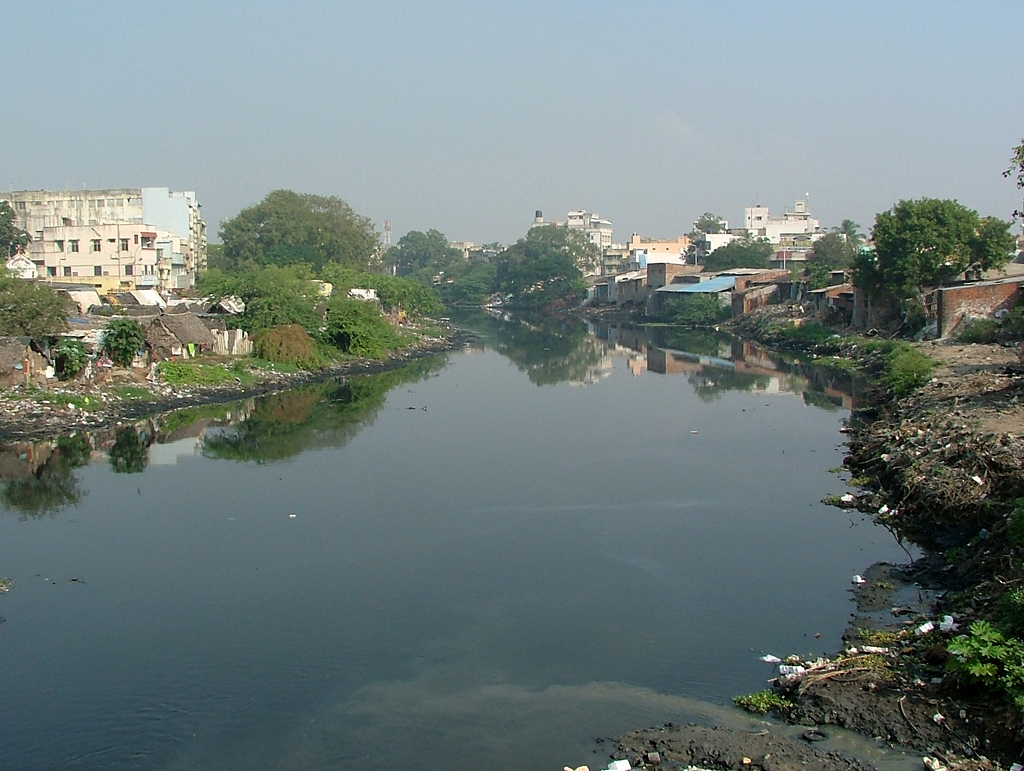He said that sewage treatment plants (STPs) needs to be established at proper places which lead to pollution in these rivers…reports Arun Lakshman
Analysis of water samples of two major rivers of Tamil Nadu — Cooum and Adayar — has revealed that they contain high levels of toxic pollutants and heavy metals.
The Tamil Nadu Pollution Control Board (TNPCB) collected water samples from 12 different locations of Adayar and Cooum rivers between March and September. The report was startling, as the samples had high levels of Ammo-Nitrogen conductivity. Ammo-Nitrogen is a toxic pollutant and its existence indicates the presence of salts and heavy metals.
High levels of Biological Oxygen Demand (BOD) were also found in the tested water samples, which shows that the water in the rivers have harmful effects on marine life as well as on humans who use the water.
Sajith Mukundan, environmentalist and project manager at Environment Protection and Research Centre, a think-tank on environmental studies based out of Tiruchy, told, “Sewage pollution is a major pollutant in rivers and there were recommendations to provide underground sewer connections to all houses and commercial establishments along the banks of these rivers.”
He said that sewage treatment plants (STPs) needs to be established at proper places which lead to pollution in these rivers.
The research scholar on water pollution said that if underground sewer connections are properly implemented and STPs are established at appropriate locations, the contaminants would be removed in these plants before the water is discharged to the rivers.
Another factor that worries environmentalists is the fact that most of the present STPs are not being used properly, leading to water being directly discharged into the rivers without any treatment to remove the contaminants. This is one major reason leading to the high levels of toxic metals in the waters of these major rivers, affecting human and marine lives.
P.S. Sreeram, a retired professor and environmentalist from Chennai, told IANS, “Marine life is directly affected by these high levels of toxic elements and at regular intervals, fishes are found dead in large numbers in these rivers. The STPs have to be fully functional to reduce the pollution levels in these rivers.”
The rivers in the Coimbatore area are highly polluted mainly due to effluents from the industries being discharged directly into them.
The Centre for Policy and Development Studies (CPDS), a Chennai-based think-tank monitoring pollution of rivers, has found in its studies that salinity in rivers in the Coimbatore region has touched 1700 mg per litre, and the rivers which once enriched the fertility of the land are now polluting drinking water sources and even land.
C. Rajeev, Director of CPDS, said, “River Noyyal is almost dead while the Bhavani river has turned highly polluted. Sadly, studies reveal that more than 600 electroplating and moulding units have drained their effluents into the Noyyal river, leading to its present plight.”
He said that the lack of effluent treatment plants in a majority of industrial units in Coimbatore district has turned into a source of pollution in the rivers of the region, including both Noyyal and Bhavani rivers.
The Orathupalayam dam, which was built for irrigating more than 21,500 acres of land, turned into a storage tank for the effluents of dyeing units of Coimbatore and Tiruppur.
Another casualty is the Bhavani river, which has become stale and highly-polluted due to discharge of effluents, including phosphate, aluminium, sulphate and ammonium.
A recent study conducted by the Environment Research Centre on water samples from Bhavani river found that the effluent water contained dioxin, which is a causative agent for cancer and impotency.
The Cauvery river, which irrigates 64 per cent of agricultural land in Tamil Nadu, has also become polluted due to the discharge from the Bhavani river.
However, with the state pollution control board and the National Green Tribunal (Southern Bench) breathing down heavily on the polluting industries, steps have been taken of late to increase the number of treatment plants in these industries and hence it is expected that the discharge of effluents in these rivers would come down.

